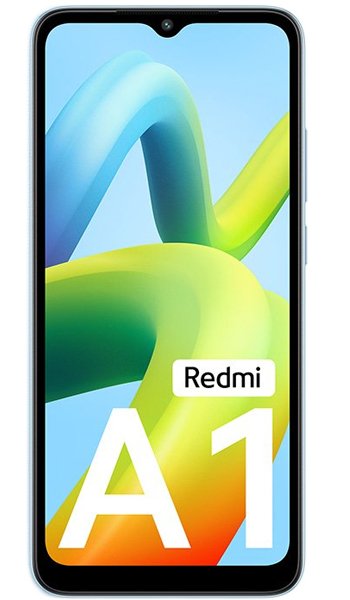Xiaomi Redmi A1 vs Xiaomi Mi Max 3 Comparison and Differences
Smartphone 1

Xiaomi Redmi A1
Smartphone 2

Xiaomi Mi Max 3
Smartphone 3
Xiaomi Redmi A1 or Xiaomi Mi Max 3 Specs Comparison
or
 Common specs
Common specs
| Brand and model | Xiaomi Redmi A1 | Xiaomi Mi Max 3 | |
| Rating | (+0) | (+0) | |
| Release date | 2022, September 06 | 2018, July | |
| Dimensions (HxWxD) | 164.9 x 76.8 x 9.1 mm | 6.49 x 6.49 x 3.02 in | 176.2 x 87.4 x 8 mm | 6.94 x 6.94 x 3.44 in | |
| Weight | 192 g | 6.77 oz | 221 g | 7.8 oz | |
| Body Build | Plastic, P2i Nano coating | Front glass, aluminum body | |
| Case | buy from Amazon | buy from Amazon | |
| Colors | Light Green, Light Blue, Black | Black, Champagne Gold, Blue | |
| Battery | 5000 mAh, Li-Ion, non-removable | 5500 mAh, Non-removable Li-Ion | |
| Approximate price | $ 100 | 230 EUR | |
| Check price | from Amazon | from Amazon |
 Screen
Screen
| Technology | IPS LCD | IPS LCD | |
| Touchscreen | capacitive touchscreen | capacitive touchscreen | |
| Display colors | 16M | 16M | |
| Screen size | 6.52" in | 6.9" in | |
| Screen area | 102.6 cm2 | 122.9 cm2 | |
| Screen format | 20:9 (height:width) | 18:9 (height:width) | |
| Screen to body ratio | 81.0% | 79.8% | |
| Screen resolution | 720 x 1600 px | 1080 x 2160 px | |
| Screen PPI /points per inch/ | 269 PPI | 350 PPI | |
| Screen protection | Scratch resistant | ||
| Other specs | - 400 nits (typ) | ||
| Screen protector | buy from Amazon | buy from Amazon |
 Camera and Video
Camera and Video
| Rear camera, main | 8 MP, Dual | 12 MP, Dual | |
| Camera specs | -8 MP, f/2.0, (wide) -0.8 MP (QVGA) |
-12 MP, f/1.9, 1/2.55'', 1.4µm, dual pixel PDAF -5 MP, depth sensor |
|
| Functions | Dual-LED flash, HDR | Dual-LED flash, HDR, panorama | |
| Video | 1080p@30fps | 2160p@30fps, 720p/1080p@30fps (gyro-EIS), 720p@120fps | |
| Front camera, selfie | 5 MP, Single | 8 MP, Single | |
| Specifications | 5 MP, f/2.2 | 8 MP, f/2.0, 1/4'', 1.12µm | |
| Video | 1080p@30fps | 1080p@30fps |
 Performance
Performance
| Operating system - OS | Android 12 (Go edition), MIUI 12 | Android 8.1 (Oreo); MIUI 9.5 | |
| Chipset | - Mediatek MT6761 Helio A22 (12 nm) | - Qualcomm SDM636 Snapdragon 636 (14 nm) | |
| CPU | - Quad-core 2.0 GHz Cortex-A53 | - Octa-core 1.8 GHz Kryo 260 | |
| GPU | PowerVR GE8320 | Adreno 509 | |
| External memory | microSDXC (dedicated) | microSD, up to 256 GB (uses SIM 2 slot) | |
| Internal memory | 32GB 2GB RAM, 32GB 3GB RAM | 128 GB, 6 GB RAM 64 GB, 4 GB RAM |
 Benchmark
Benchmark
| Antutu 9 Total | 102779 | ||
| Antutu 8 Total | 143749 | ||
| Antutu 7 Total | |||
| GeekBench 6 Single Core | 293 | ||
| GeekBench 6 Multi Core | 1001 | ||
| GeekBench 5 Single Core | 276 | ||
| GeekBench 5 Multi-Core | 1212 | ||
| GeekBench 4 Single Core | 1336 | ||
| GeekBench 4 Multi-Core | 4896 |
 Communication and Connectivity
Communication and Connectivity
| SIM card | Dual SIM (Nano-SIM, dual stand-by) | Hybrid Dual SIM (Nano-SIM, dual stand-by) | |
| Network | GSM / HSPA / LTE | GSM / CDMA / HSPA / EVDO / LTE | |
| Bands | -2G - GSM 850 / 900 / 1800 / 1900 - SIM 1 & SIM 2 -3G - HSDPA 850 / 900 / 2100 -4G - 1, 3, 5, 8, 40, 41 |
-2G - GSM 850 / 900 / 1800 / 1900 - SIM 1 & SIM 2 CDMA 800 & TD-SCDMA -3G - HSDPA 850 / 900 / 1900 / 2100 CDMA2000 1xEV-DO -4G - LTE band 1(2100), 3(1800), 4(1700/2100), 5(850), 7(2600), 8(900), 20(800), 34(2000), 38(2600), 39(1900), 40(2300), 41(2500) |
|
| Speed | HSPA 42.2/5.76 Mbps, LTE | HSPA, LTE | |
| GPRS | Yes | Yes | |
| Edge | Yes | Yes | |
| Wi-Fi | Wi-Fi 802.11 a/b/g/n, hotspot | Wi-Fi 802.11 a/b/g/n/ac, dual-band, Wi-Fi Direct, DLNA, hotspot | |
| GPS | GPS, GLONASS, GALILEO, BDS | Yes, with A-GPS, GLONASS, BDS | |
| NFC | No | ||
| USB | microUSB 2.0 | Type-C 1.0 reversible connector | |
| Bluetooth | 5.0, A2DP, LE | 5.0, A2DP, LE |
 Music and Audio
Music and Audio
| Radio | FM radio | FM radio | |
| Headphone jack | Yes | Yes | |
| Others | - Active noise cancellation with dedicated mic |
 Other features
Other features
| Sensors | - Accelerometer, proximity | - Fingerprint (rear-mounted), accelerometer, gyro, proximity, compass , Infrared port | |
| Other extras |
- Fast battery charging 9V/2A 18W (Quick Charge 3.0) |
Reviews and Opinions on Xiaomi Redmi A1 and Xiaomi Mi Max 3
If you had to recommend one of these phones to a friend, which one would it be and why? Share your arguments using the Add Opinion button!
